There are many awards and praises that can be given to an outstanding lens. The biggest one I can give is keep that lens mounted on my camera and use it every day. The new SIGMA 16mm F1.4 DC DN | Contemporary E mount lens is that outstanding of a lens to me.

I’m not a photographer that is as interested in minute technical details of lens testing as I am a photographer that wants results in the real world. And the SIGMA 16mm has not disappointed me with each new day and each new assignment.
Technical specifications
There are some basic technical details that do matter to me. This is a DN Lens designed specifically for mirrorless cameras from Sony and on the Micro Four Thirds system. So, for Sony, it is an APS-C image circle, which relates to a 24mm F1.4 field of view thanks to the 1.5x crop factor. On the micro four thirds system with the 2x factor, it equates to a 32mm F1.4 lens. On both systems, it is designed for both still and video operations, with a virtually silent stepping motor that won’t be noticeable during video capture.
Even though this is a lens designed for a cropped sensor, it will work on a full frame Sony Alpha camera: a simple custom function setting crops the view to cover the APS-C image circle on the sensor. And 24mm is an ideal focal length for a lot of my newspaper assignments as well as street photography. It’s also a fast lens at f1.4 which is ideal for the street photography I love to do, as well as a lot of commercial assignments. It incorporates a stepping motor, which means it will be a great lens when I shoot video on my Sony camera. And it’s weather sealed, so if I get caught in the rain, my lens will keep performing.
The lens also fits a focal length niche with few head to head competitors. It is difficult to beat this lens when comparing the number of special elements, sharpness and price.
The design of the lens matches the style of the SIGMA 30mm F1.4 DC DN | Contemporary lens: clean, modern looking with a large manual focus ring. There are no focus or f-stop scales, which I personally don’t see the need for on a focus-by-wire lens that pairs with live-view EVF cameras with focus peaking, high magnification focus confirmation and real-time depth of field previews!
Gearing up to take the 16mm F1.4 for a spin
The most important feature for me is how the lens performs in real life. So, to test this out, I used it in various work scenarios: street/travel photography; newspaper assignments, and general feature photography.
On one trip to Chicago, I hit the streets with the SIGMA 16mm mounted on a Sony A7SM2. On an-other trip, I had the new Sony A7R3. The lens was the consistent factor comparing performance with each camera. The lens focused fast with each camera model. Images shot with the were unbelievably sharp corner to corner. This lens is so good at doing what a great 16mm crop sensor lens should do that any performance issues encountered on the street were from trying to change camera settings faster than my fingers wanted to hit buttons on the camera.
When I’m walking on the street I’m usually looking around for something to catch my eye. I’ll set my camera to an automatic aperture mode, so my first priority is to control depth of field. My next priority is having a shutter speed high enough, so I can freeze a moment when I see it. My last priority is ISO. I’ll set it high enough that I can maintain a shutter speed fast enough so the action does not blur. The newest cameras on the market handle high ISO very well, affording you a great image even in the 1600-3200 range and beyond. If an idea is taking time coming together, I then have time to make changes to my settings to improve the image. If some-thing happens quickly and there isn’t time to think about camera settings, I know I’ll still be able to capture the moment with my initial settings. For me, it’s the moment frozen in time that is more important rather than a noiseless image with no feeling.
The 16mm F1.4 in action!
Whether on the street, or covering an event for a client, this lens is fast and it is sharp. I trust the SIGMA 16mm F1.4 DC DN | Contemporary lens to deliver professional images every time I use it.
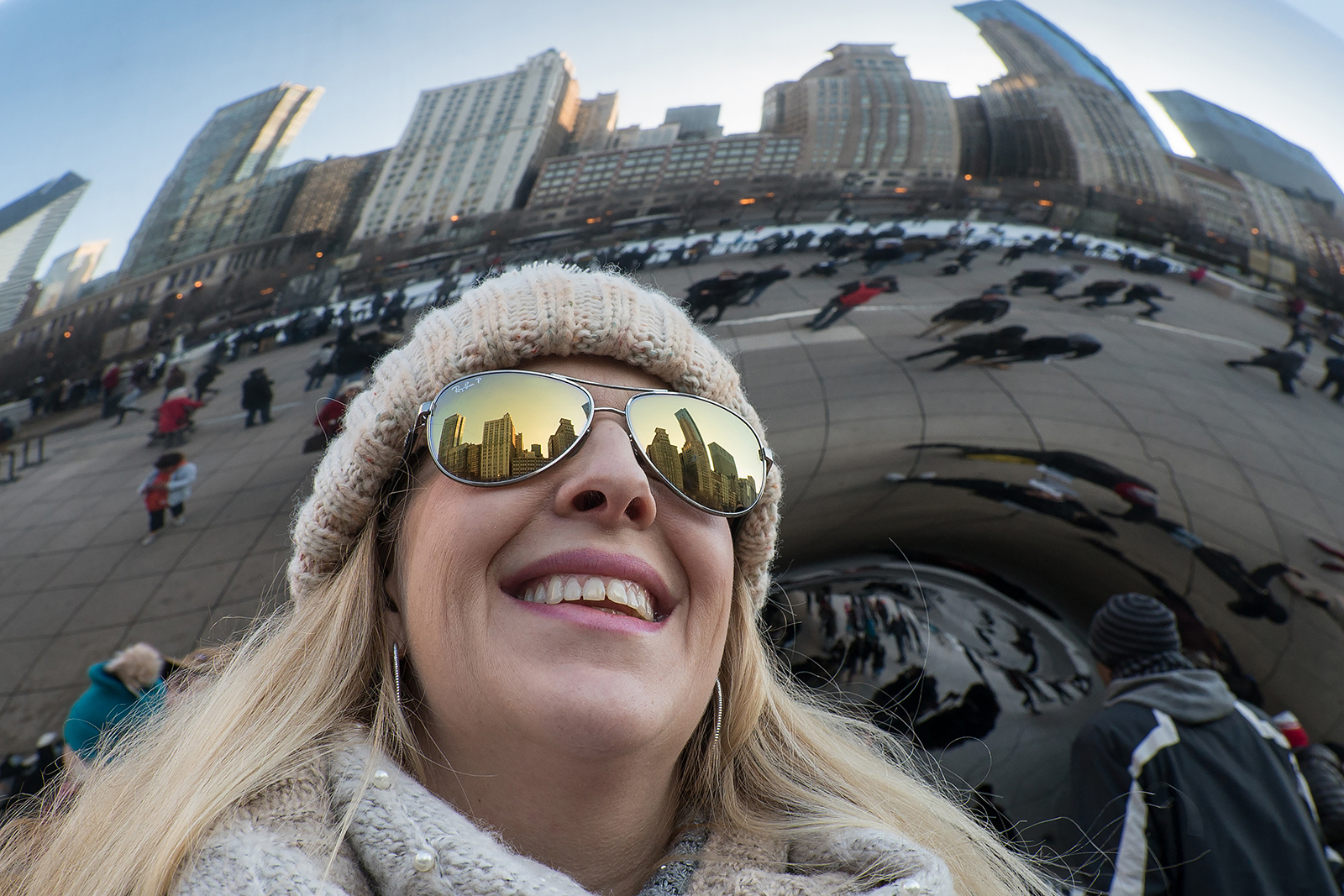
With the “Bean” reflecting the Chicago skyline in the background, the sunglasses of a tourist reflect the same scene. Moving in close on your subject with the SIGMA 16mm lens allows you to focus on the main subject while showing enough background to establish the scene. In this image, an f-stop of f8 increased depth of field, allowing the subject in full focus and minor blurring of the background.
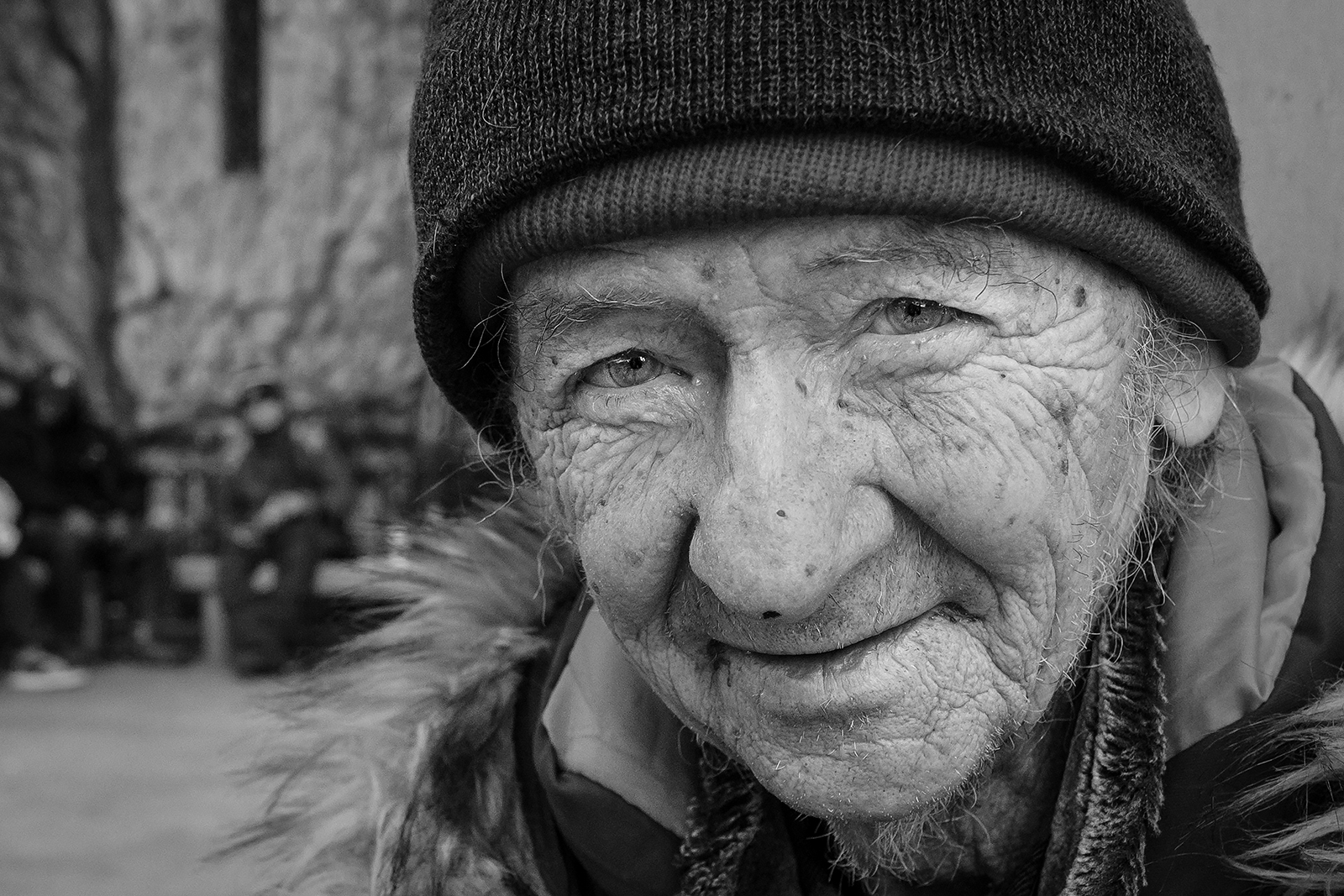

After photographing my friend with his dog on Michigan Avenue, I asked if I could take a few quick portraits without his beloved Manny next to him. I didn’t have time to change camera settings, so just moved in to create an environmental portrait of my friend in his element. But later, while processing them at home, I realized I preferred a tightly cropped version of the portrait. I crop a lot of my photos in post production if I think it will give them a stronger feel. What amazed me with this portrait was the incredible detail in his face after cropping the image as much as I did. The SIGMA 16mm F1.4 DC DN | Contemporary is an incredibly sharp lens!
A crowded holiday festival provided a lot of opportunities for color and details. Moving in on the subject, in this case a Nutcracker soldier, and opening up the SIGMA 16mm to only f2 still gives a sharp subject but increases blur to the background for better separation.

Catching bright and low light
Downtown Chicago along Michigan Avenue. Poor ambient lighting for autofocus was quickly overcome by using the large manual focus ring on the SIGMA 16mm. The manual focus ring covers most of the lens barrel, so is easy to use even with gloves on. Manual focus with this lens is silky smooth.

My favorite building to photograph in Chicago is the Burberry building on Michigan Avenue. The mirrored cross pieces offer an abstract look to the city. The last time I photographed the building, I had a 50mm Art lens. The wider angle of the 16mm Contemporary lens pushed me to look for different ways to capture the reflections. Along the front side of the building I was able to capture reflections of the buildings across the street. Still looking for a unique angle, I looked up from the corner of the building and knew I had something different.
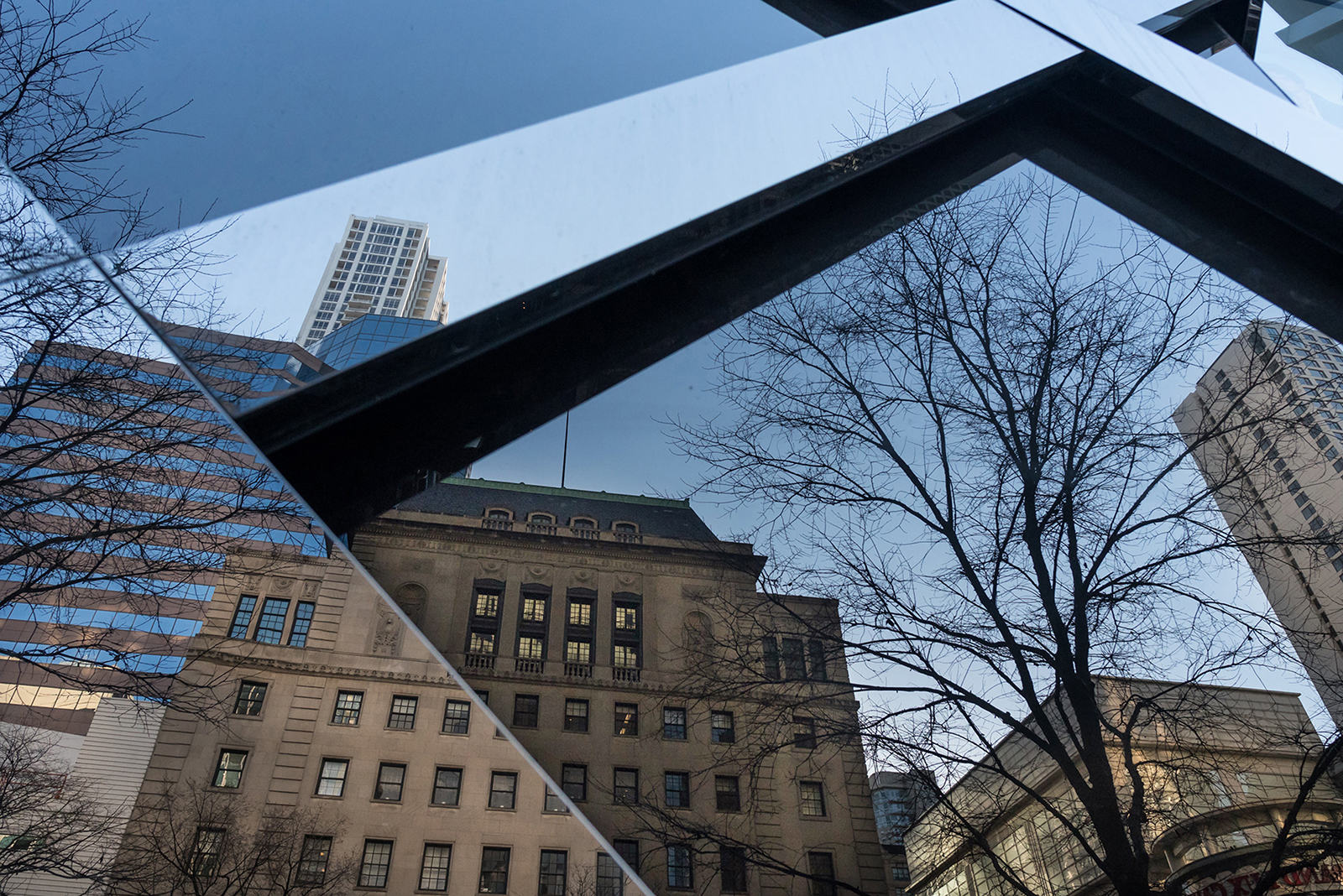
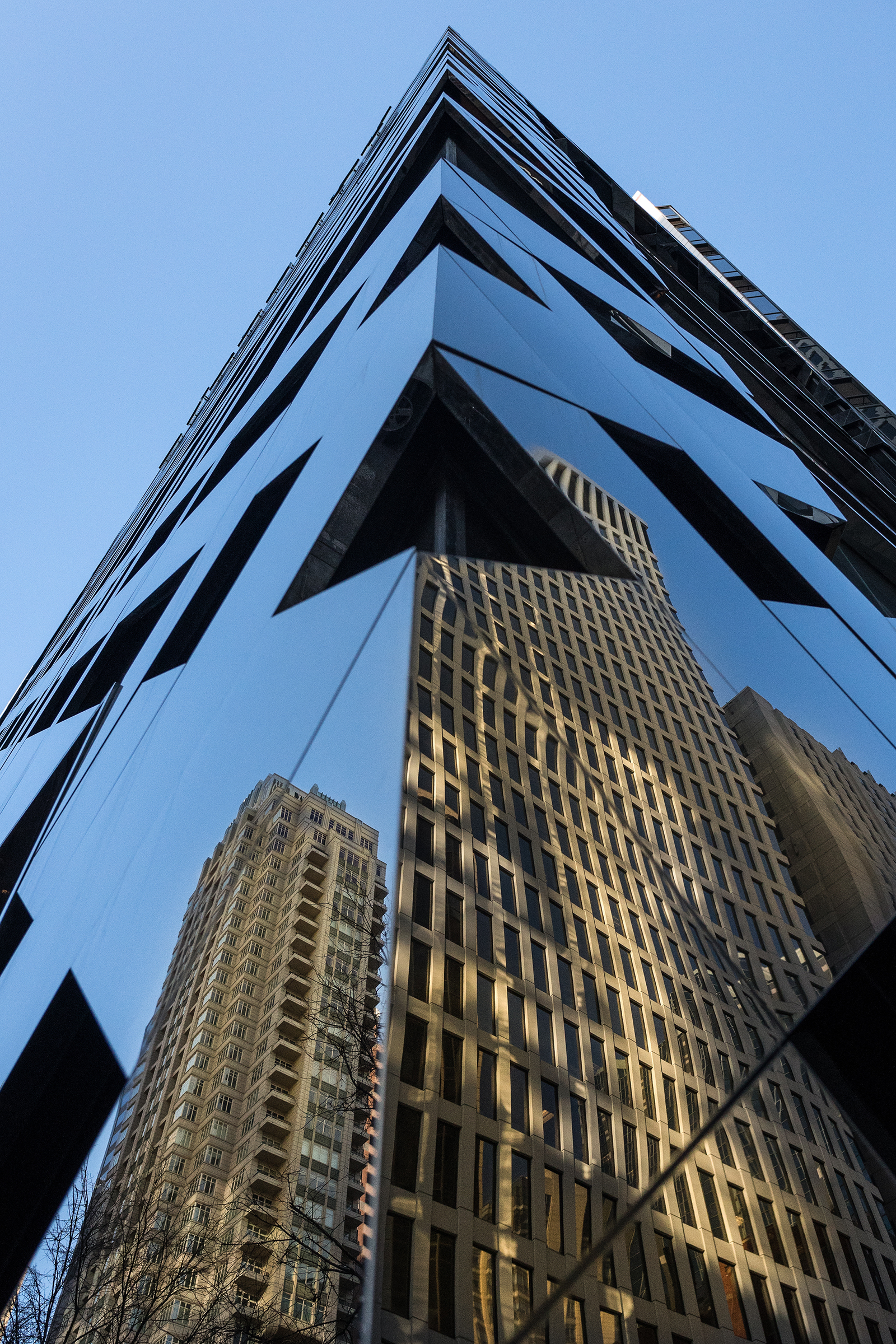
Wrapping up my Chicago trip was supper. And why, I thought, should I shoot a beautiful skillet of corn bread on the table with my phone camera when I had the SIGMA 16mm Contemporary lens with me. When you are using a lens that opens up to f1.4, it’s easy to default to that wide open f-stop. The downside is your depth of field is very narrow, even with a wide-angle lens. I stopped down to f4 so I could have the front third of the corn bread in focus and let the rest fall off to a soft blur.
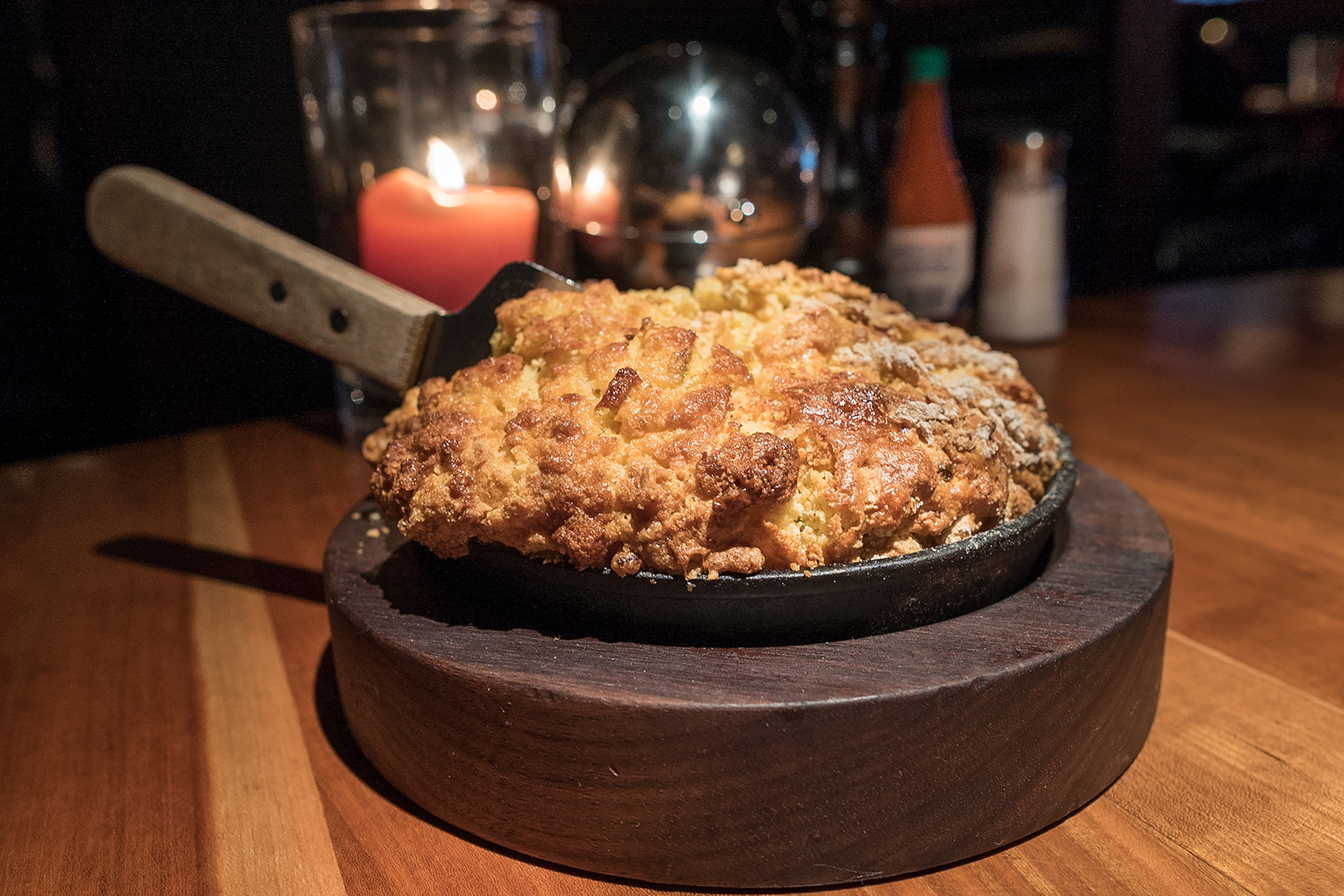
Going wide for landscape
Walking out the door with a specific lens on my camera makes me think a little more about what I want to photograph. It’s easy with a wide-angle lens to just think “wide”. It does have a field of view of 83.4 degrees. But I don’t just want to shoot a wide snapshot. I want to capture a feeling.
I tried that on a below zero day along Lake Michigan in northern Wisconsin. One aspect I have always liked about a wide-angle lens is that I can shoot into the sun and usually come up with an interesting image. As the sun was just peeking out through sea fog on Lake Michigan, I photo-graphed the Sturgeon Bay light house. With some added f-stop to my settings, I was able to get the feel of the sun kissing the frozen snow and ice in the foreground and be focused all the way to the horizon.
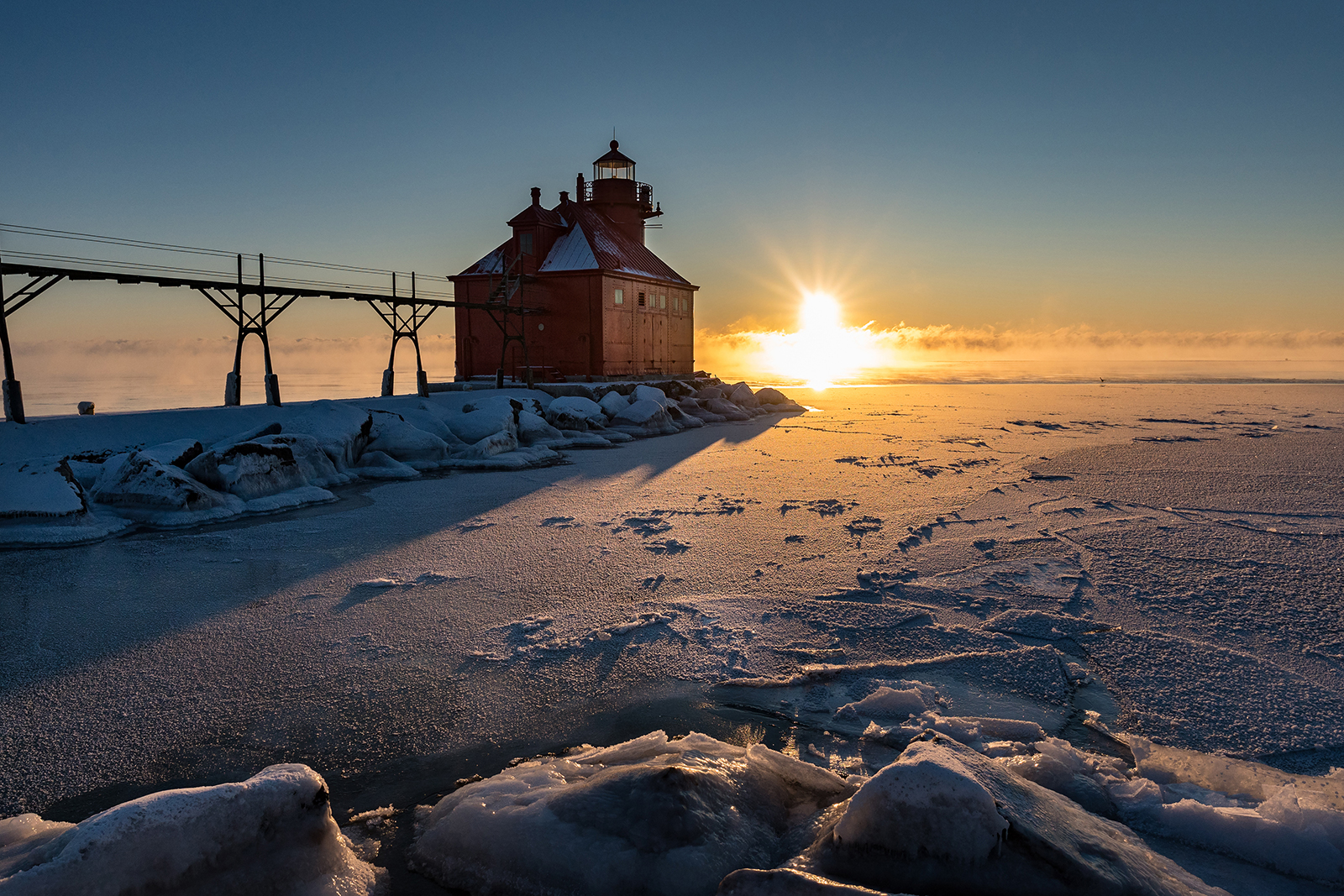
A bit farther up the Lake Michigan coast is a county park named Cave Point. Crashing waves coat the area with ice. While exploring the beauty of the ice formations, I noticed icicles hanging down in front of a rock overhang. Moving as close as I could to the rock wall, my 16mm SIGMA was able to capture the icicles in sharp focus while keeping the background in focus when stopped way down to f14.

The precise lens for the job
Occasionally I’ll see something I know will make an interesting photograph but I’m waiting for the right lens to make it happen. The SIGMA 16mm was the lens I was waiting for to capture my friend Beth in the stairwell of a local medical building. Between the sharpness of the lens and the ability of the Sony A7R3 camera I was using to tilt the rear LCD, so I could see my composition while holding the camera out over the stair railing, I was able to produce the shot.

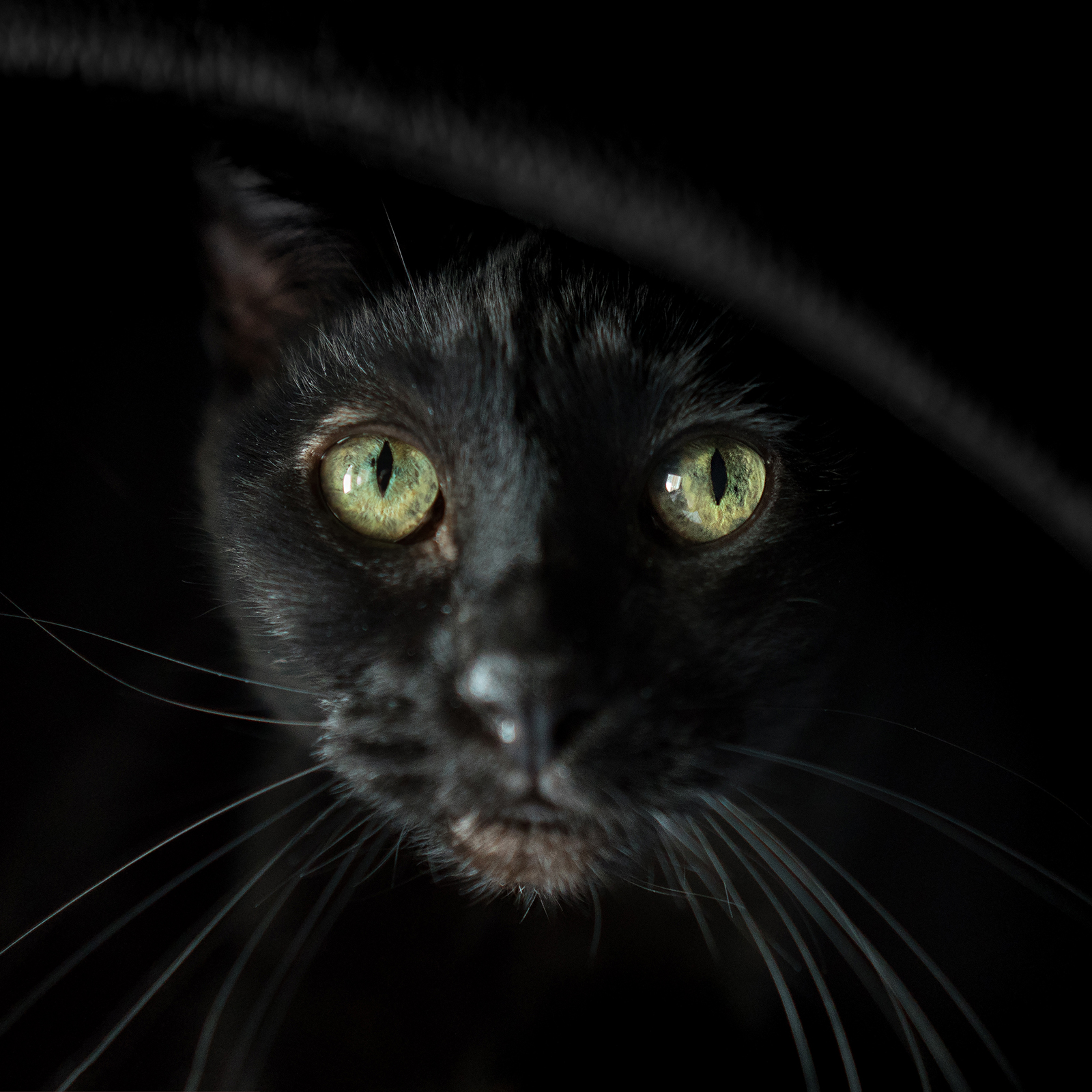

Love your post here! I have a sony a6000 with the 16-50mm kit lens and I’m thinking of buying a prime lens for my trip to SE Asia. I really like the sigma 16mm but I found that I’m mainly shooting at around 20mms with my kit lens. So do you think a sigma 30mm 1.4 would be more suited for my needs? With the 16-50mm kit lens I dont like the fact that at 16mm I have to get really close to a subject and was wondering if the sigma is 16mm also a 16mm on a sony a6000 or are the specs for a full frame camera?